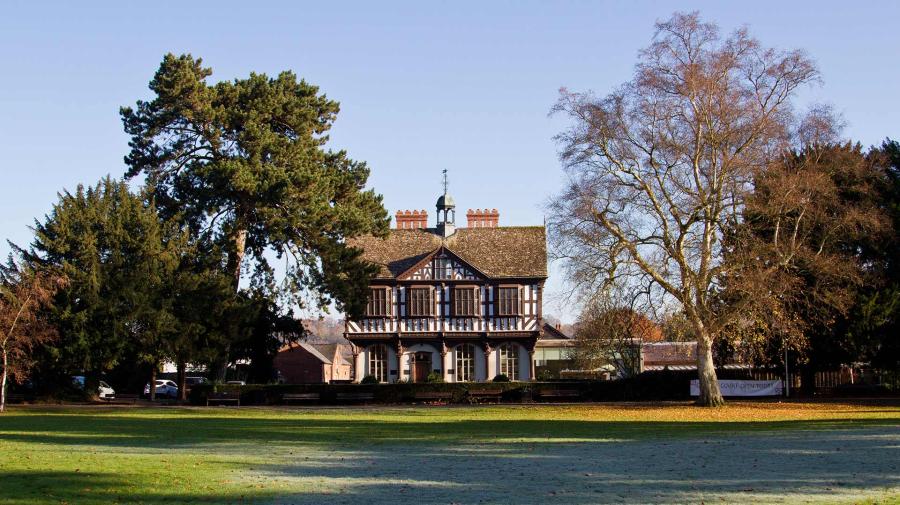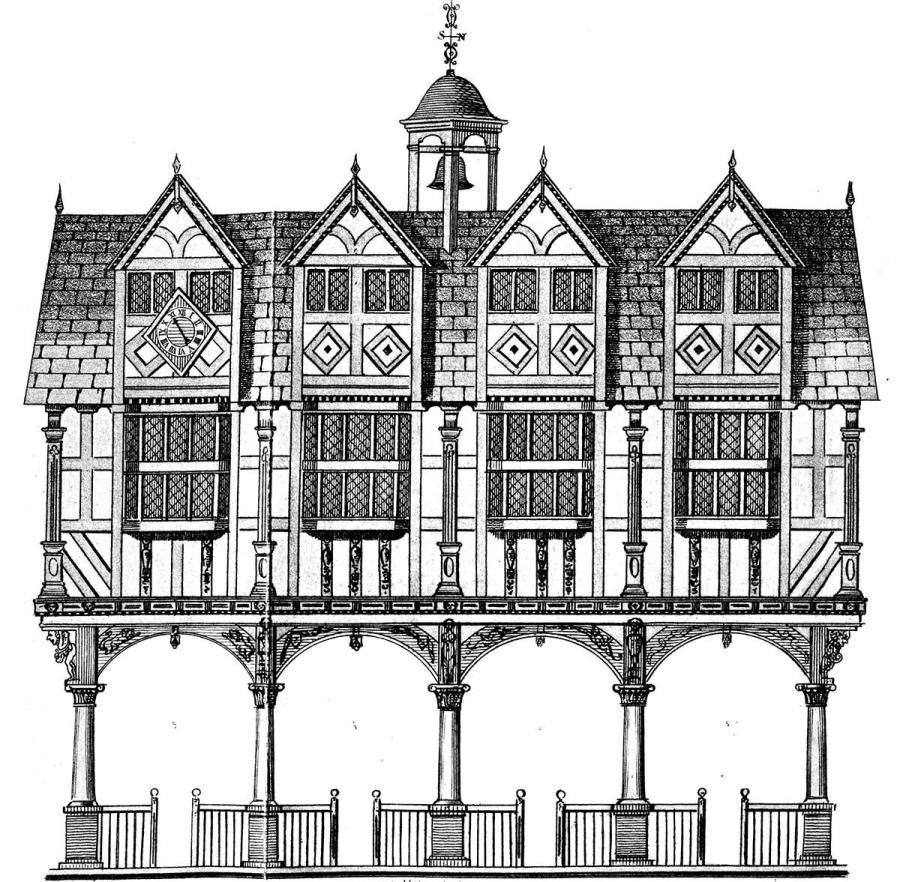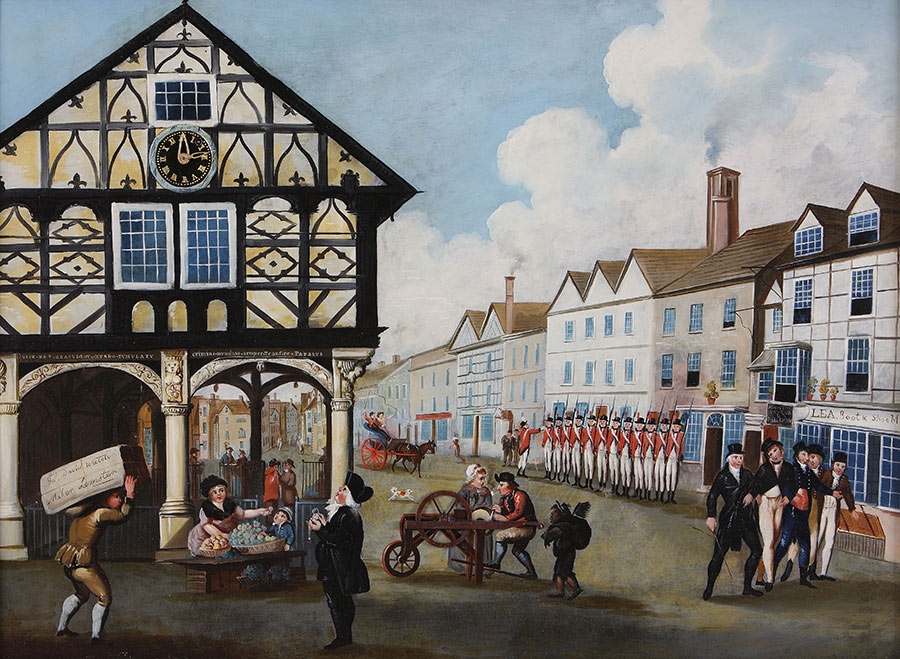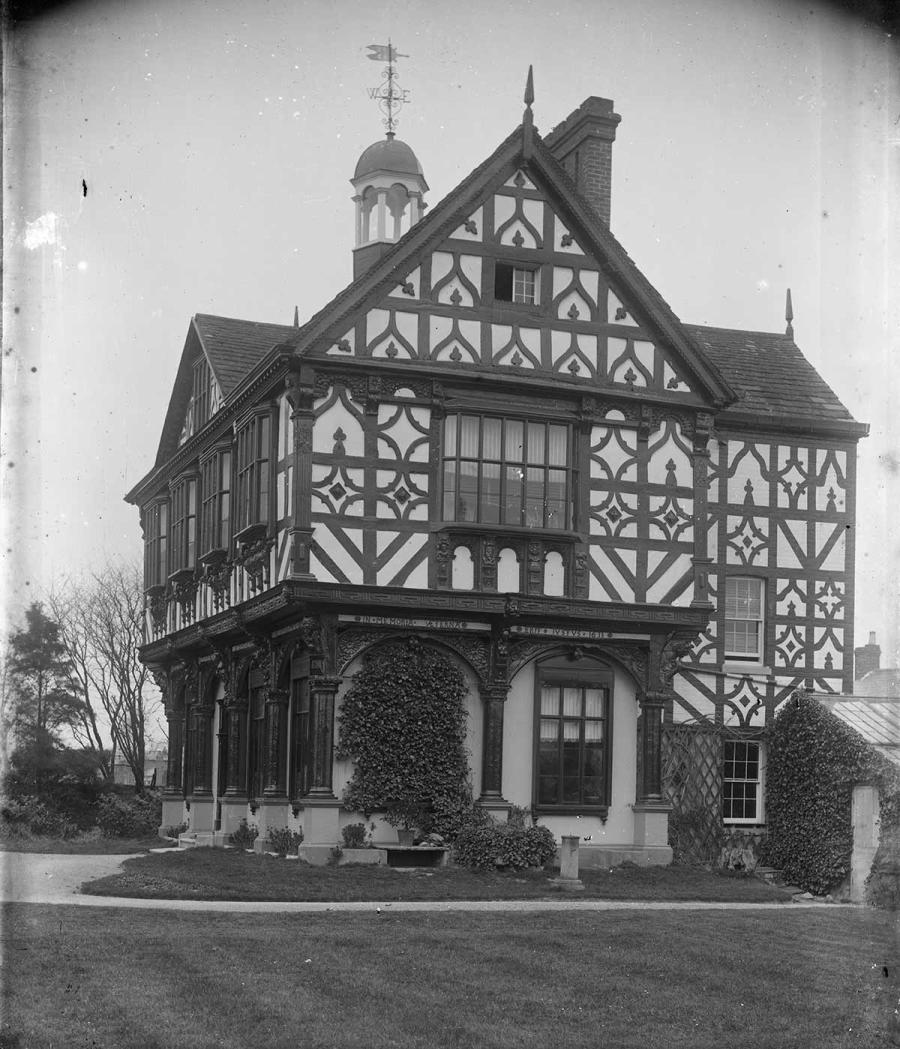Introducing Leominster’s Market House
This site was once the hub of Leominster’s markets, at the junction of five roads. Leominster’s Market House was first built just a few metres from here in 1633. It replaced an earlier building on the same site and was the work of local master carpenter, John Abel.
The Market House was open at ground level for the sale of butter, poultry, eggs and fish. There was a single large room above, which was used for market administration. Legal court sessions were also held in the Market House and the town’s nine trade guilds probably used it for meetings.
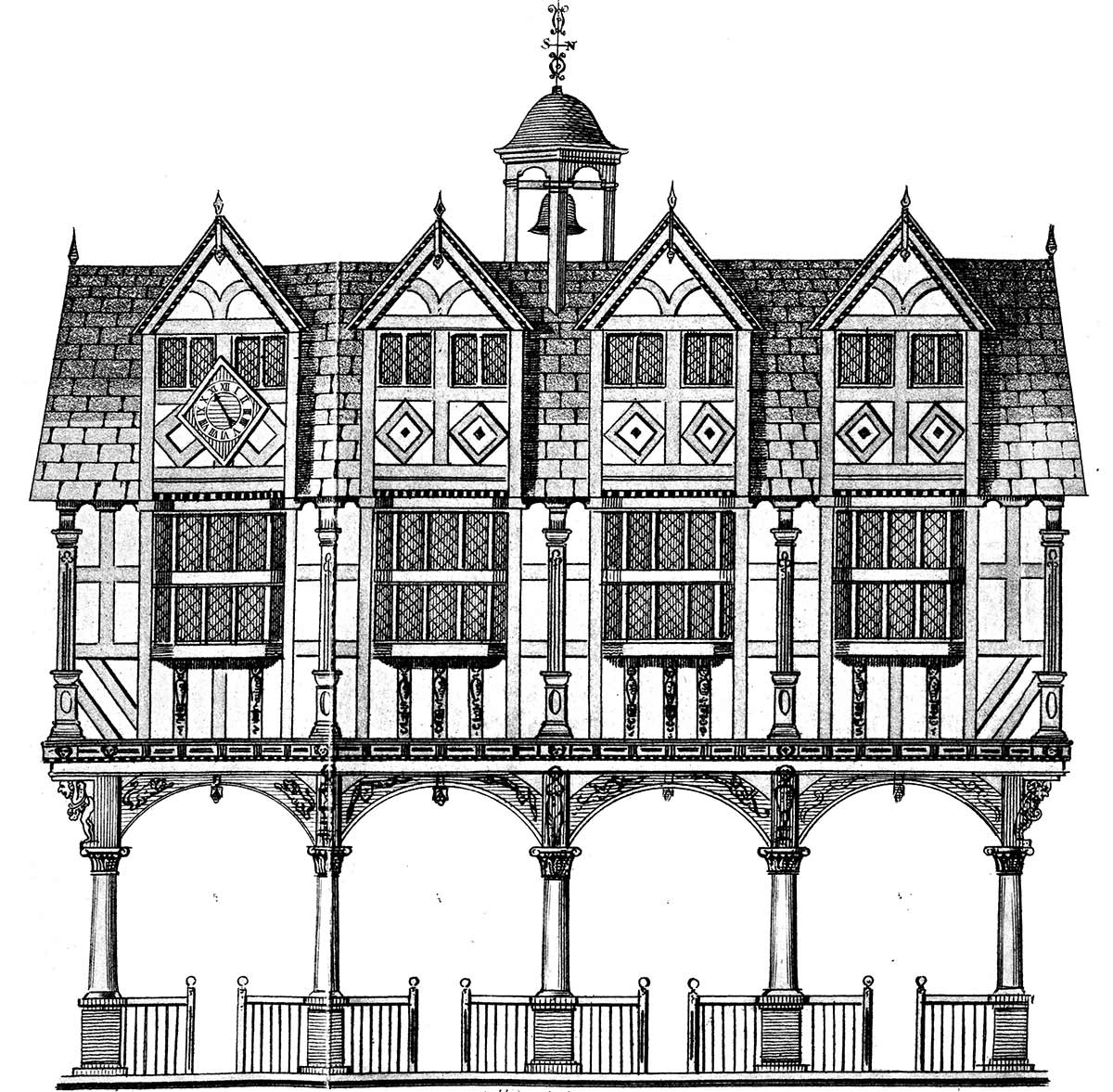
In 1750, the town council adopted the upper room of the Market House as their new Council Chamber, moving from the Frere Chamber (the upper room of the old two storey monastery gatehouse, which stood across Church Street).
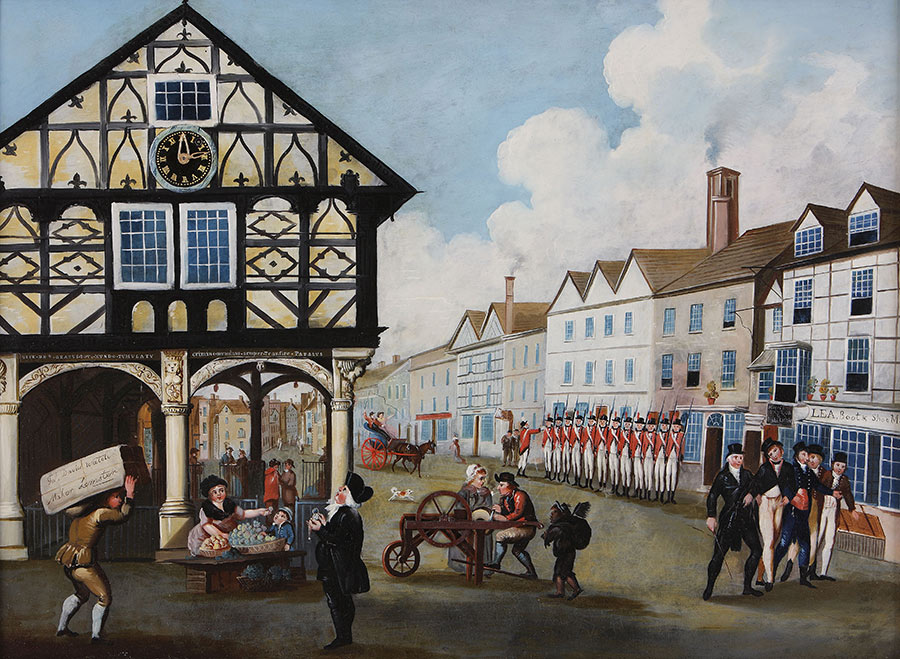
By 1850, the Market House had become a traffic hazard in the town centre. It was dismantled and lay in pieces in a builder’s yard until 1859, when it was bought by local land owner John Arkwright. Arkwright rebuilt the house on the park known as the Grange – a five-minute walk from here. The open ground floor was enclosed and the building was leased to tenants as a private home, known as Grange Court.
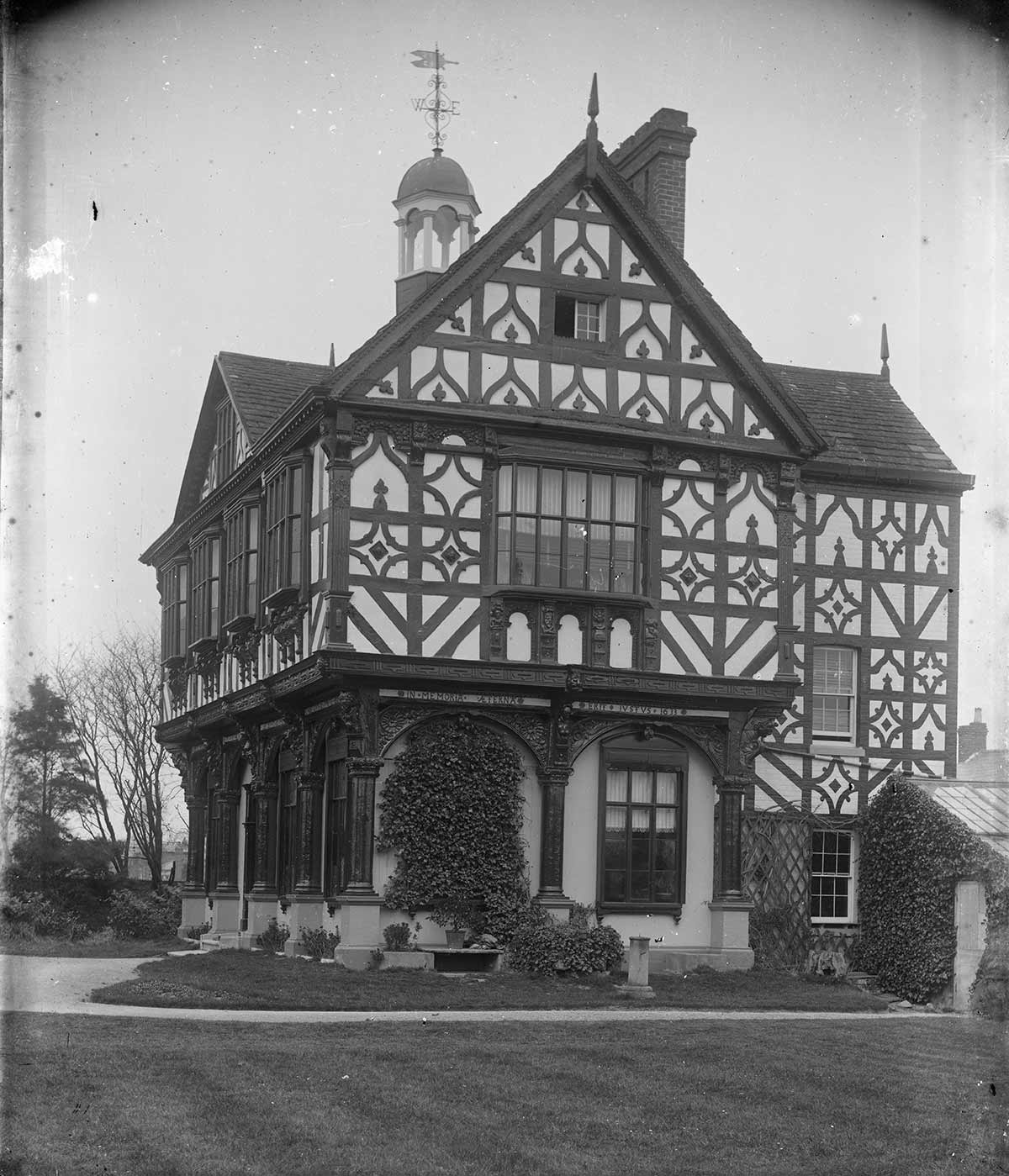
Grange Court remained a family home until 1939, when Leominster District Council made a compulsory purchase to stop it being bought and dismantled by an American millionaire, who was keen for it to become the gatehouse to St Donats Castle in South Wales.
Three different councils had offices in Grange Court until 2008. After extensive renovation, this unique timber-framed building became a social and heritage hub, run on behalf of the people of Leominster. It is open to the public and remains one of Leominster’s most important historical sites.
Did you know?
John Abel, the carpenter who built Grange Court, was born in Sarnesfield in around 1578. Abel was in Hereford in 1645, when it was besieged during the Civil War; he built flour and gunpowder hand-mills to replace the mills destroyed by the Roundheads. King Charles I was so grateful, that he gave Abel the title of King’s Carpenter. John Abel also designed a wooden siege engine called The Sow. He had hoped to use it against the Roundheads at Canon Frome, but they captured it first. John Abel lived to the ripe old age of 97!

